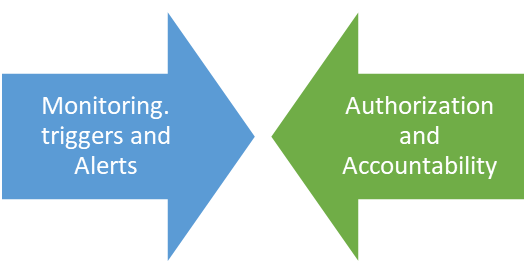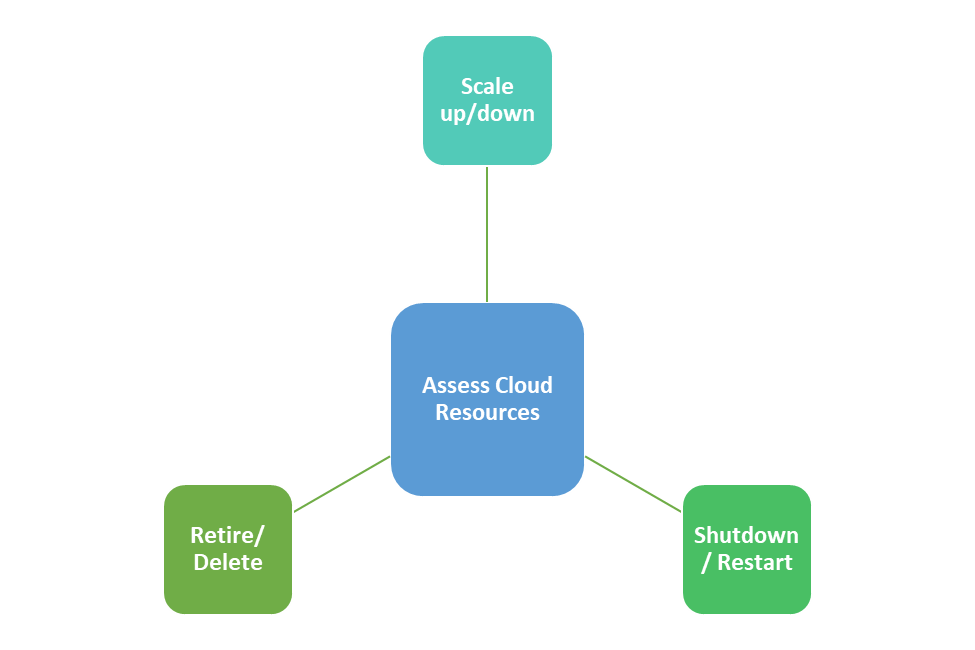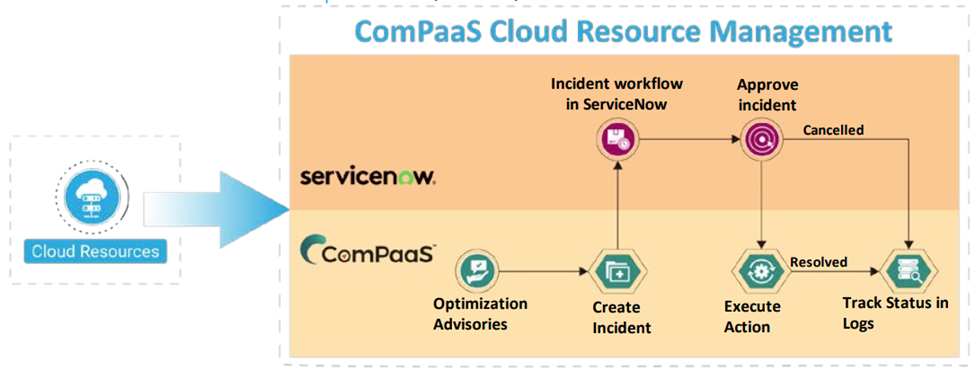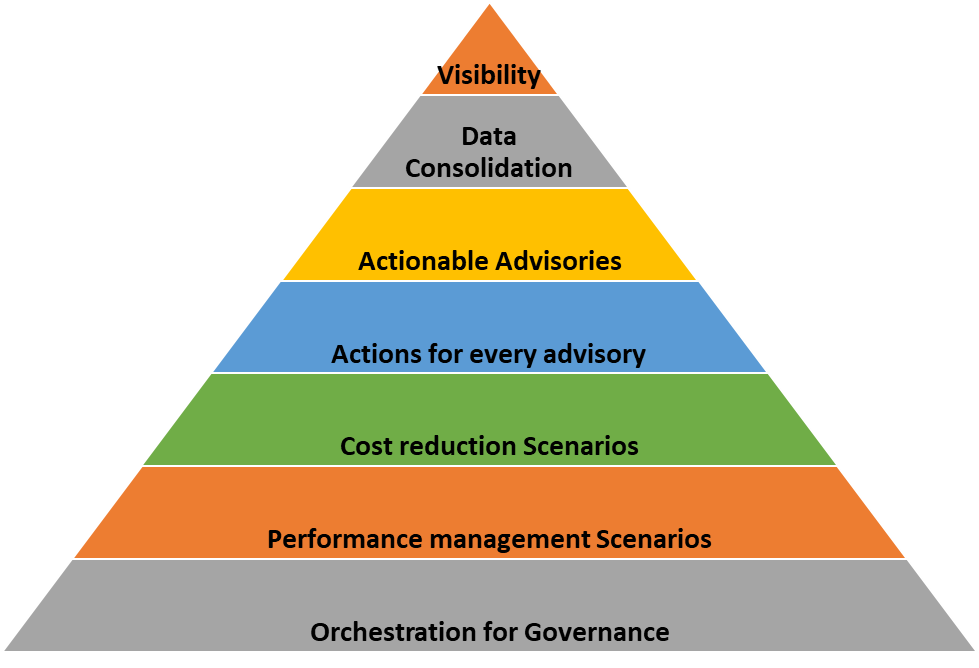How to Prevent Cloud Sprawl and Reduce Spiraling Costs
The cloud is a remarkably useful tool of our generation, offering capabilities far beyond anything available in the industry before. However, as with any other technology, the shift is uncomfortable and uncertain, causing confusion as well as frustration amongst many intrepid, aspiring cloud users.
The Two Major Problems with Cloud Computing
Picture this: you have just migrated to the cloud and are looking forward to finally reaping the illustrious benefits promised with such a change. Instead of seeing your IT costs reducing, your cloud bills now soar high to worrisome levels.
Unfortunately, this is a common problem seen by many organizations that make the decision to move to the cloud, and if left uncontrolled, this trend can force you into a situation where your cloud migration decisions need to be revisited. This, in turn, places a lot of pressure on IT infrastructure decision-makers to ensure that the planned costs after cloud migration are maintained within their expected limits, and they do not spiral out of control.
So, this begs the following two questions:
- Is it possible for one to successfully and efficiently manage cloud costs?
- Can this process be made simple and sustainable for long-term operations?
Reasons for Spiraling Cloud Costs
There are two primary reasons companies like yours can incur increased cloud costs:
Cloud Sprawl
Cloud sprawl is mostly seen as the unchecked proliferation of cloud resources, and the accountability of its use cannot be easily established.
Cloud Cost Overruns
Cost overruns are a result of the mismanagement of resources that were initially considered as essential, but, over the course of its usage, have reached a stage where their value and utility need to be reconsidered.
You can manage cloud sprawl and cost overruns effectively if organizations adopt a clear process to acknowledge and manage them. These processes can be established from more of a governance perspective, allowing employees to be trained to watch for such trends, and to feel empowered to take immediate action.
How to Set Up a Continuous Cloud Optimization Process
Every organization that uses the cloud must have a process set in place to effectively manage it. However, a process that requires people to manually manage cloud resources is often very expensive. To avoid this and ensure that such costs are saved, the process must be much more continuous than initially expected. What we really need is a set of tools or a platform to enable continuous cloud optimization. This, combined with a thorough process flow, will help contain the very costs that are currently seen to be one of the critical elements that hinder widespread cloud adoption.
Managing Cloud Sprawl Through Continuous Assessment of Cloud Accounts
Every company has multiple organizations and, in general, each has multiple cloud accounts or subscriptions. In some cases, more than one cloud provider is used to address the IT needs of each of these organizations, eventually leading to a long and tedious process, as the number of cloud accounts or subscriptions grow.
There are two ways this can be handled:

1. Create an Alarm
Having a tool that alerts the review group that certain accounts have gone beyond their planned cloud expense is, by far, one of the most crucial puzzle pieces needed in establishing governance. Budget limits can be set for every cloud account, and every time an organization approaches these preset limits, an alert can be triggered for review.
2. Establish an Authentication System
In addition to alerts, sprawl is triggered by uncontrolled provisioning of cloud resources. This calls for accountability of the resources provisioned and the formation of a process to review and approve the necessity for the additional resources being used. One can accomplish this by simply creating an orchestration process where there are approvals required for every new resource being used, allowing for only the adequately justified to be utilized on the cloud.
Even with having tools to help manage the sprawl of cloud resources, it is important to have commitment by your organization to set up a dependable review process to limit sprawl, as well as set up multiple contingencies that can be used to scale back, when excessive use of cloud resources cannot be accounted to its value to each organization.
How to Manage Cost Overruns Through Continuous Assessment of Cloud Resources
Once cloud resources are provisioned, it is vital to monitor their usefulness over a period of time. The failure to do so leads to the most ubiquitous trend seen in the industry: overprovisioning.
On initial investigation, and based on performance metrics, cloud resources are provisioned and then, in most cases, resource usage drops for all non-critical scenarios. As most cloud resources are used in development, testing, and staging, there is great variation in usage patterns, which requires these resources to be scaled down when they are not in use. The cloud offers this opportunity, which is not available in traditional datacenters. When this is coupled with finding resources that are not used over a longer period, those can be retired or backed up to save additional costs.
It’s possible to adopt a strategy to assess the following situations:

- Check the usage patterns of resources and look for trends which can indicate when resources need to be scaled down. For example, it’s possible to move virtual machines to lower flavors that cost less.
- Assess usage patterns to automate shutting down resources when not in use, and automatically bringing them up when needed.
- Find resources that are not used over extended periods of time and retire them. In some cases, the resources can be readily released. In other cases, they need to be backed up before deleting or releasing them.
How to Effectively Manage Your Cloud Resources
To reduce costs through effective management, you need a clearly defined process to manage cloud accounts and govern resource usage. There are multiple tools available in the market to add in the orchestration needed to accomplish such goals.
One common solution is the use of a ticketing system to approve the requests made for new resources, as well as changes to existing resources. At Corent, we have found that many organizations use ServiceNow as a governance tool that they use to ensure approvals by the right process managers. This simple approach appears very effective and offers many avenues for integration with existing processed within organizations.

Automate Your Cloud Management with Corent’s ComPaaS
As seen throughout this discussion, the market need for continuous optimization is apparent. With more companies journeying into the cloud than ever before, continuous optimization has steadily evolved from a simple convenience to a necessary tool. As such, we at Corent have made ComPaaS, a platform for continuous optimization of cloud resources, available for organizations currently grappling with cloud cost containment problems.
ComPaaS offers capabilities to address the above concerns and the platform is available as a SaaS Service. Many organizations are more comfortable using SaaS applications and utilizing a SaaS business model helps in trying a solution before actually buying for long term use. Organizations can exercise the capabilities listed below to see how effective this platform can be to help address one of the most common problems faced by IT teams immediately after migrating to the cloud.

Achieve Greater Visibility
ComPaaS offers immersive visualization of cloud resources to help navigate to the exact resource which requires attention.
Consolidation
There’s a lot of data available on the cloud and it’s scattered in different places for any cloud account manager to access. ComPaaS brings all this data onto a single screen and presents it in a form that can be easily assimilated by different account teams.
AI-Driven Advisories
Using the data gathered from the cloud on patterns of resource usage, it is possible to make informed decisions on how to optimize cloud resources. ComPaaS uses artificial intelligence rules to generate advisories to help improve your cloud utilization and reduce cost.
Actions for Every Advisory
When advisories are presented, they generally are made available as actionable advisories but, in most cases, you are required to execute the actions yourself. ComPaaS presents advisories that are directly linked to actions which you can execute on a click and realize the changes on the cloud.
Cost Reduction
It is common to see cost saving scenarios up to 30%. ComPaaS makes it easy to realize the savings through complete automation.
Performance Management Scenarios
Analyzing the performance of the system resources used on the cloud, it’s possible to chart a trend of usage that can be traced to reducing the flavors at different periods of time during the day or the week to minimize cloud resource costs. This can be achieved easily in ComPaaS using trend analysis and trend rules to automatically change the resource configurations in real-time.
Orchestration for Governance
For effective governance, it’s important to automate the approvals through existing workflow. ComPaaS offers integration with your ServiceNow account, where any addition or change to cloud resources would require the workflow to be exercised and upon approval this automatically initiates the action on the cloud account.







No Comments